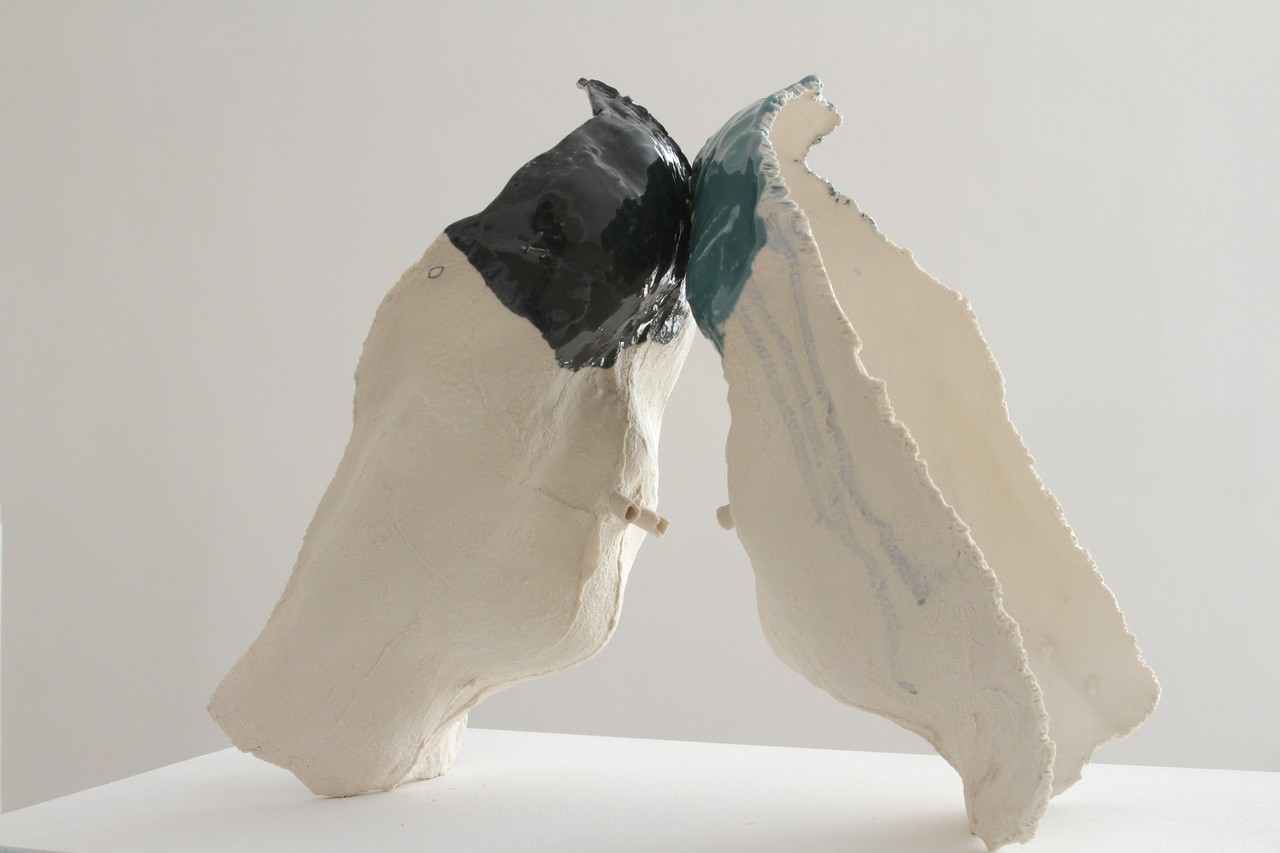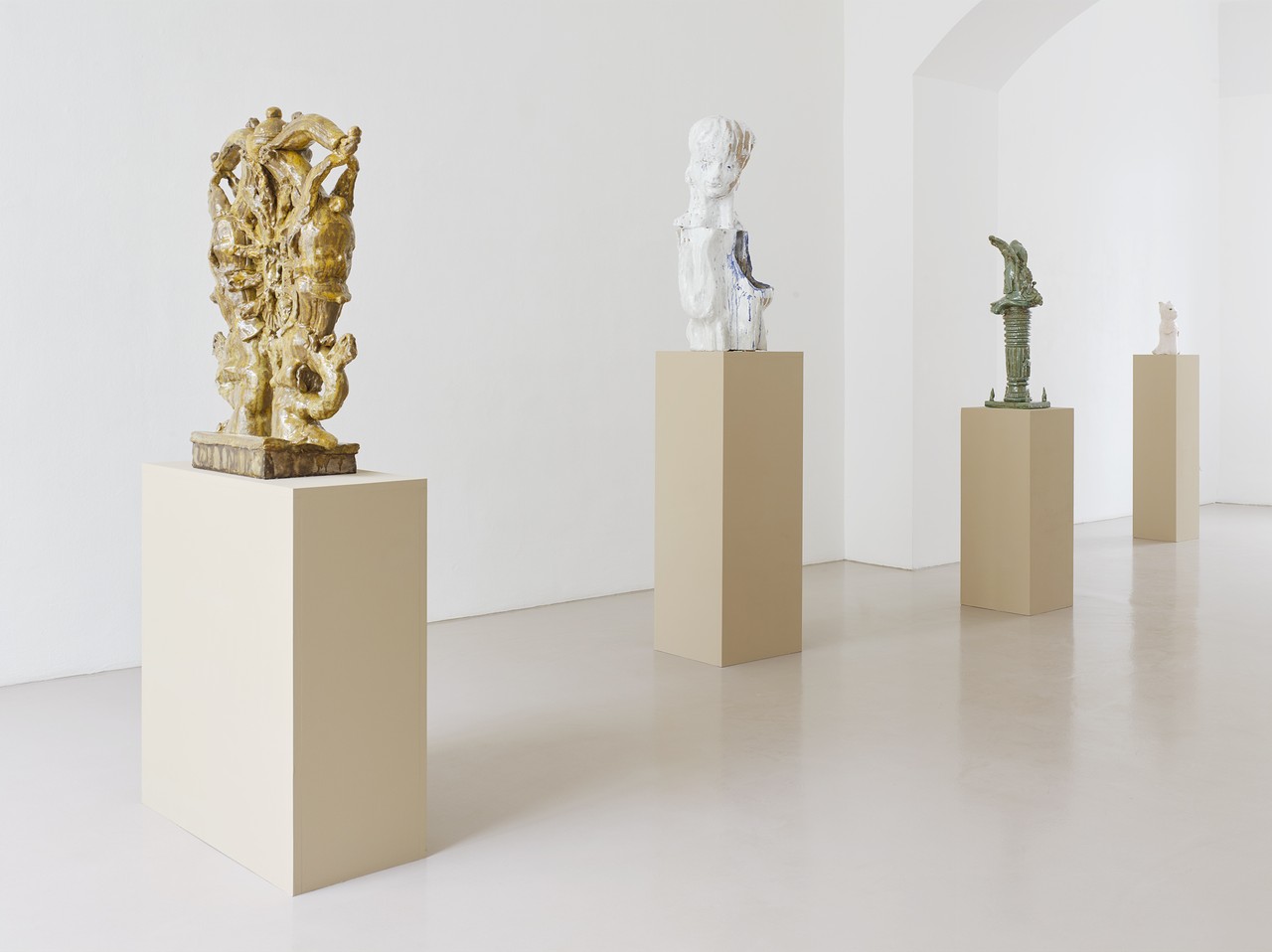TON SCHERBEN STEINE
Buckhiester, Haiss, ikemura, Muller, Tobias, Tahon, Trenkwalder
10 Mar - 20 Apr 2017
Thomas Rehbein Gallery presents a selection of sculptural works by various contemporary artists, bearing the meaningful the title Clay Shards Rocks. Common to all the participants is the use of specific materials, these being programatically proclaimed in the title –the name of a veteran German rock group, well-known for its provocative and political impact, resonating in the slightly altered order of elements. Clay, along with porcelain and stoneware, belongs to the superordinate category of ceramic masses, the raw material from which the body or shape is first formed. The German word „Scherben“ conveys a dual meaning: On the one hand it is descriptive of this original biscuit that has undergone firing but still lacks glaze. On the other hand it denotes the broken element, the split fragment, the shard, symbolizing the shattered form as such.
Rocks, the third term in the title, are represented through exquisite sorts such as marble and alabaster, evocative of a classical tradition of statuary and sculpture. The component „shards“ implied in „Scherben“, adds a certain destructive aspect to this order of elements. An overall fragility is implied, a susceptibilty to damage. This quality not only applies to a delicate material consistency, but also to the precarious process of shaping, the vulnerability of the creative act as such, as well as the essential content and underlying idea.
The inciting concept of the show unfolds in the contrasting appearance of figural and fragmented shapes.
The works often appear roughly finalized or even incomplete. They are visibly marked by the creative process, bearing witness to either material imperfections or failures in craftsmanship or further demonstrate a raw, unfinished state. As opposed to a classical Renaissance ideal, which sought fulfilment of an idea by means of overcoming or even sublimating the material, the works on display reflect on their variable condition and introduce the possibility of an open, flexible form. It is the human body in its inherently frail and unstable state that stands in the center of these fundamental artistic reflections on creativity, involving depictions ranging from isolated body parts to the integral figure, although anatomically deviant. The universality of the human body and the inherent conflict between life and death, the duality of existence between body and soul, becomes the common ground for all featured positions. It ultimately serves as a metaphor for the work of art, attesting to doubt and uncertainty, ambivalence and mutability.
Rocks, the third term in the title, are represented through exquisite sorts such as marble and alabaster, evocative of a classical tradition of statuary and sculpture. The component „shards“ implied in „Scherben“, adds a certain destructive aspect to this order of elements. An overall fragility is implied, a susceptibilty to damage. This quality not only applies to a delicate material consistency, but also to the precarious process of shaping, the vulnerability of the creative act as such, as well as the essential content and underlying idea.
The inciting concept of the show unfolds in the contrasting appearance of figural and fragmented shapes.
The works often appear roughly finalized or even incomplete. They are visibly marked by the creative process, bearing witness to either material imperfections or failures in craftsmanship or further demonstrate a raw, unfinished state. As opposed to a classical Renaissance ideal, which sought fulfilment of an idea by means of overcoming or even sublimating the material, the works on display reflect on their variable condition and introduce the possibility of an open, flexible form. It is the human body in its inherently frail and unstable state that stands in the center of these fundamental artistic reflections on creativity, involving depictions ranging from isolated body parts to the integral figure, although anatomically deviant. The universality of the human body and the inherent conflict between life and death, the duality of existence between body and soul, becomes the common ground for all featured positions. It ultimately serves as a metaphor for the work of art, attesting to doubt and uncertainty, ambivalence and mutability.




